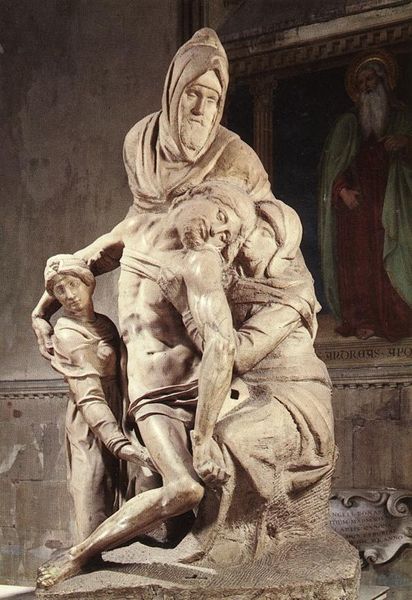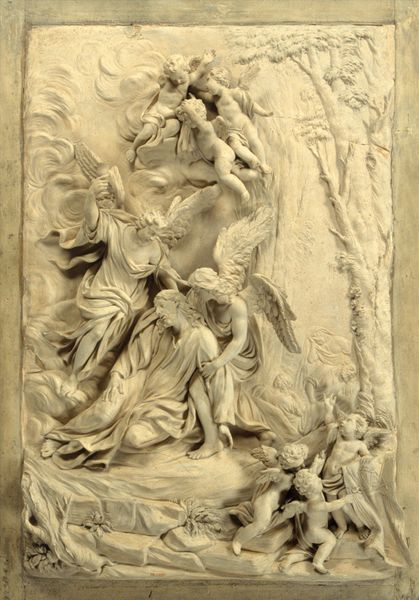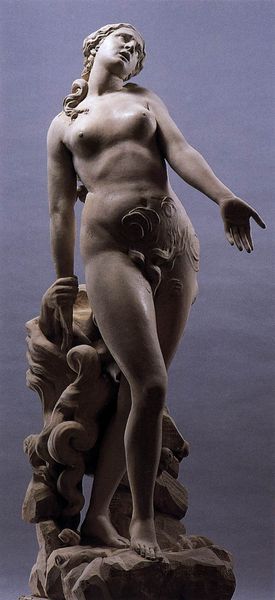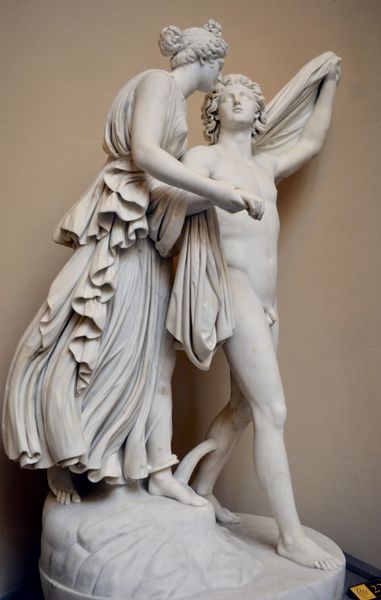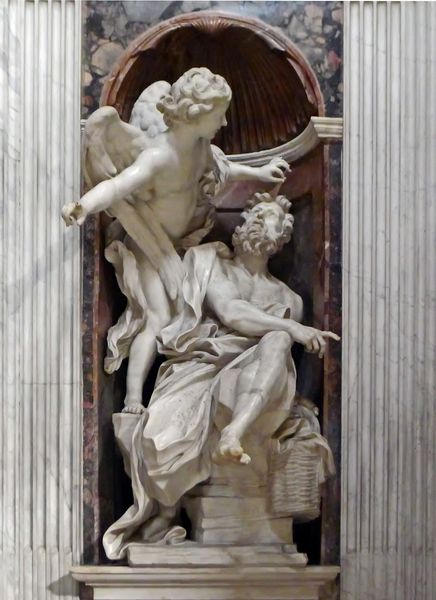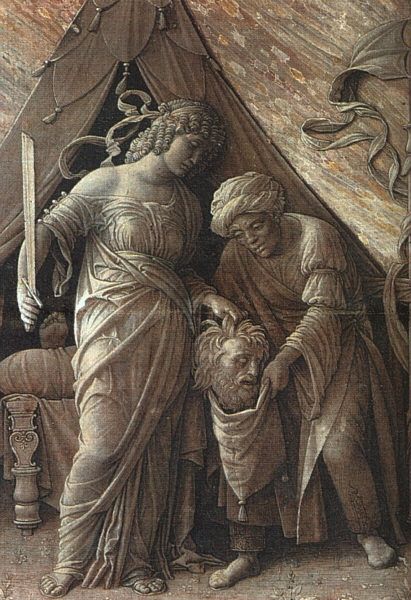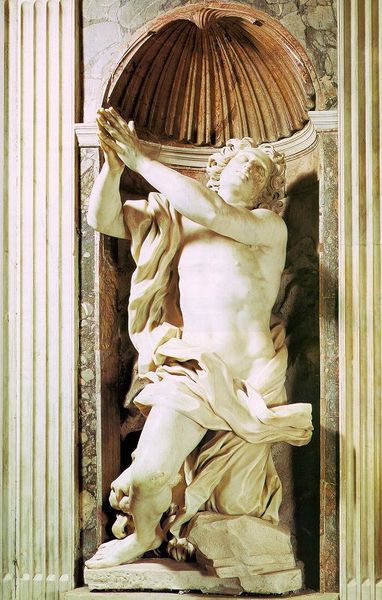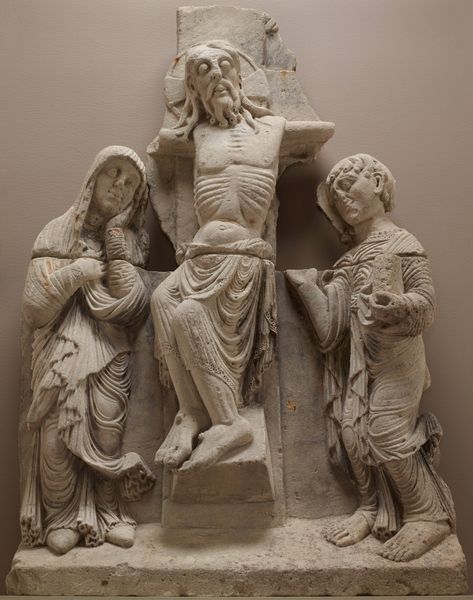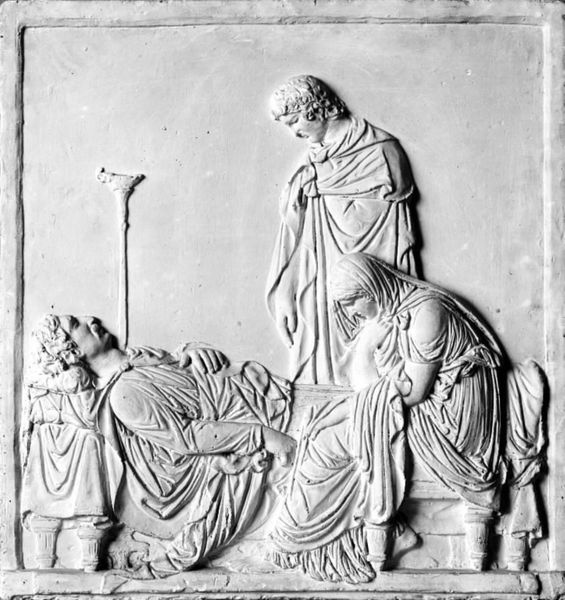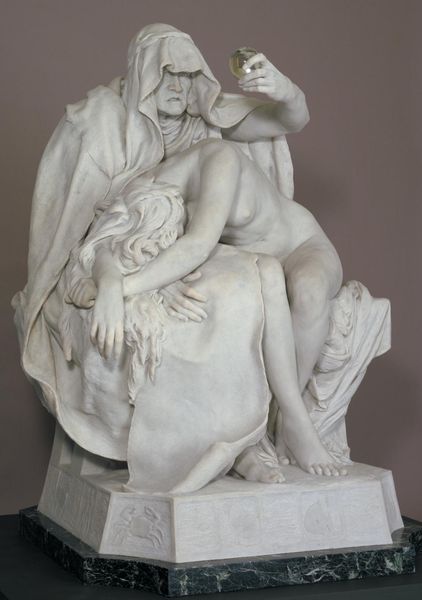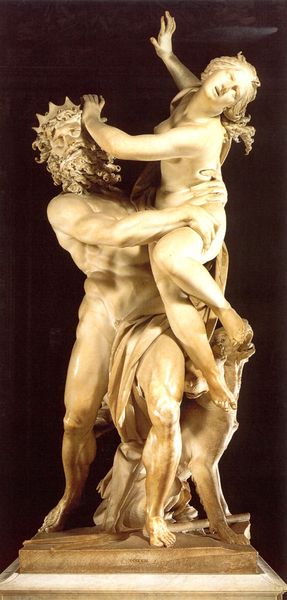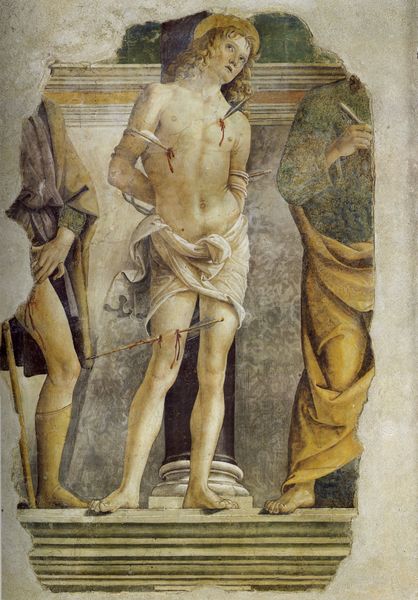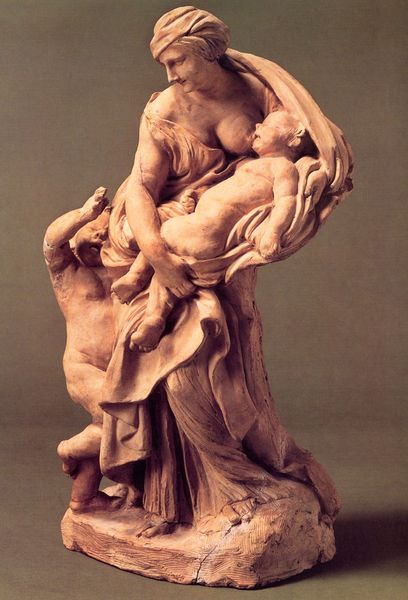
carving, sculpture, marble
#
portrait
#
statue
#
high-renaissance
#
carving
#
sculpture
#
sculptural image
#
figuration
#
child
#
sculpture
#
christianity
#
marble
#
italian-renaissance
#
statue
#
christ
Copyright: Public domain
Editor: Here we have Michelangelo's "Medici Madonna," a marble sculpture completed around 1531, housed here in the Basilica di San Lorenzo. I find the unfinished aspects really striking—it feels incredibly dynamic. What do you see as the most compelling elements of this sculpture? Curator: The dynamism arises from the deliberate tension between the polished and the raw. Consider how Michelangelo masterfully employs the *non-finito*, the unfinished, as a critical element within the composition itself. Observe the highly refined surfaces of the Madonna's face, contrasting with the roughly hewn stone at the base. Editor: So, the contrast is intentional, a technique in itself? Curator: Precisely. It serves not as a lack of completion but as an active compositional device. Furthermore, note the spiral arrangement, the figura serpentinata. The Madonna’s body turns, creating movement and visual interest, further enhanced by the drapery. Editor: That's interesting. The pose certainly isn't static, even though it's stone. How does the interplay of light and shadow enhance the sculptural form? Curator: Notice how the deep undercuts and flowing folds of fabric capture light, generating chiaroscuro effects that accentuate the three-dimensionality of the figures. It transforms cold marble into something quite lively. Do you see how these formal elements contribute to a complex understanding beyond just religious iconography? Editor: Absolutely. Focusing on form brings out intentional tensions I hadn’t fully appreciated. Thanks for pointing out these fascinating aspects. Curator: Indeed. The work encourages ongoing exploration of technique and design.
Comments
No comments
Be the first to comment and join the conversation on the ultimate creative platform.
